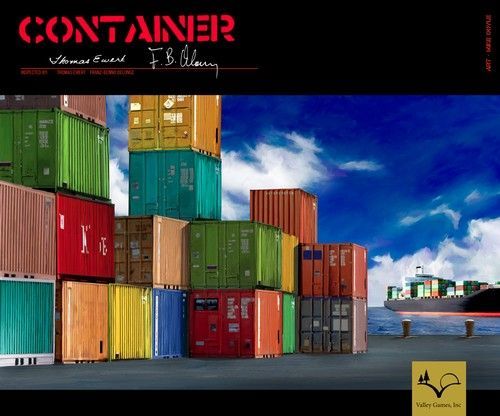Container (2007) Board Game
Container is a board game that was designed by Franz-Benno Delonge and Thomas Ewert and released in in 2007. It falls under the categories of economic, industry/manufacturing, nautical, and transportation games. The game was published by Valley Games, Inc. and has been well-received by players for its unique gameplay mechanics.
Game Components of Container
How To Setup Container
To set up Container, each player starts with a secret pricing card that lists the values of the different colored containers. Players begin with some initial capital and no goods. The game board is set up with the warehouse and manufacturing facility spaces available for purchase. The containers are placed within reach of all players. Each player selects their starting actions, and the game is ready to begin.
Gameplay Mechanics and Game Objective
Key Mechanics:
Game Objective:
Player Experience
Container is a game that thrives on group psychology and dynamics, simulating a mini economy created by the players. It starts with simple rules but leads to complex decisions, such as pricing goods competitively, cornering markets, and bidding strategically. The game is highly interactive, with each player’s actions affecting the others significantly. It is noted for its unique blend of supply and demand mechanics, making each game session different based on the players’ strategies.
Pros
Cons
Personal Thoughts on Container
Container is a game for those who enjoy economic simulations, negotiation, and strategic planning. It is ideal for players who appreciate complex decisions within a simple framework. The game is particularly suited for groups of 3-5 players who can engage in the dynamic interplay of supply and demand. While it may not be the best fit for casual gamers due to its depth and length, Container is a gem for those who enjoy intricate economic games and are willing to invest the time to master its nuances.
We are supported by our audience. When you purchase through links on our site, we may earn an affiliate commission, at no extra cost for you. Learn more.

